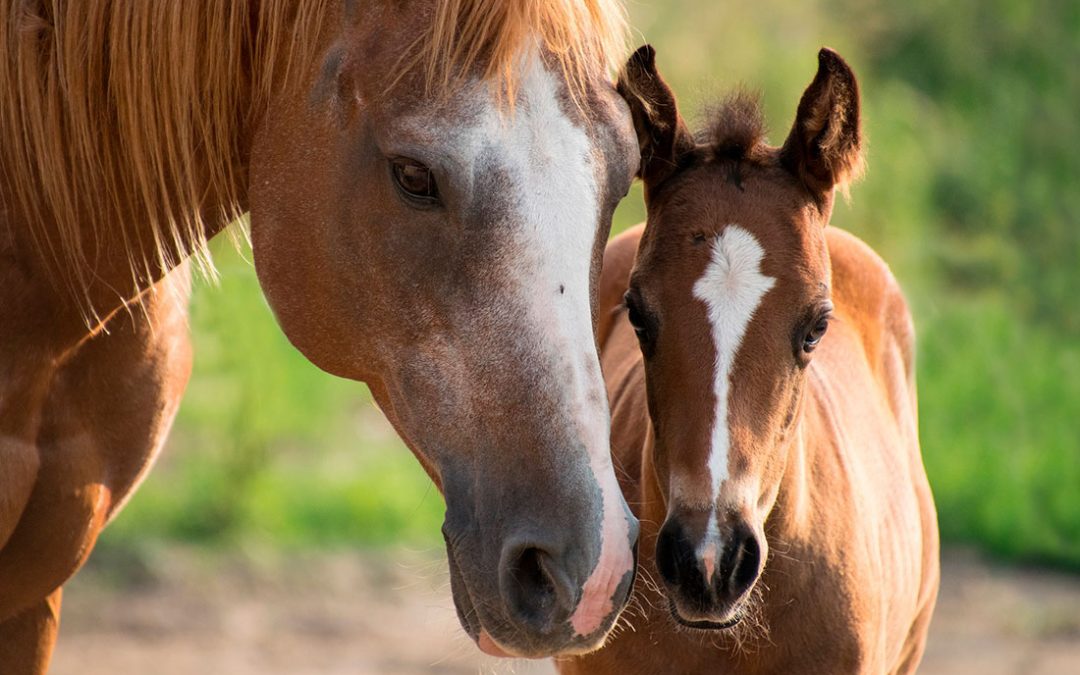An endless number of physiological events are carried out in living beings, which allow them to carry out all the functions necessary for the existence of the organism. For this there is a group of glands and tissues, which make up the Endocrine system; and which secrete certain substances known as hormones and who will be responsible for transmitting signals in the body to carry out the necessary processes.
Endocrinology is the branch of medicine which studies all these hormonal processes. Within these endocrine organs is the group that is related to the processes of Animal Reproduction; and they will be responsible for ensuring that all processes are carried out for the training of new individuals.
For the moment of birth of a species to occur, many endocrine events occur; and the main ones responsible are the sexual hormones which will be named and described by their function in the animal reproduction of the female.
As endocrine organs that produce reproductive hormones; The hypothalamic-pituitary axis, located in the brain, should be named. Secretions of gonadotropin-releasing factor are generated from the hypothalamus; Abbreviated as GnRH, it is peptide in nature and is responsible for the release of follicle stimulating hormone (FSH) and luteinizing hormone (LH). It also secretes Prolactin-releasing hormone (PRF) and Prolactin-inhibiting hormone (PIF), both of which are peptides and their function is to release and inhibit Prolactin, respectively.
Continuing with the pituitary gland, an organ which is divided into the adenohypophysis and neurohypophysis. Three hormones of utmost importance in reproduction are present in the adenohypophysis, these are Follicle Stimulating Hormone (FSH); whose function is to recruit the primordial follicles and from there they begin their development; Luteinizing Hormone (LH) is responsible for the growth and maturation of follicles, playing a crucial role in ovulation since this event occurs when the highest peak of this hormone in the body is reached. LH is involved in development. and maintenance of the corpus luteum (CL); and finally there is Prolactin (PRL), which plays a role in stimulating and maintaining milk production.
Two hormones are found in the neurohypophysis, one of which is Oxytocin, responsible for uterine contractions; essential for childbirth to take place and involved in the secretion of milk in the mammary glands. The other hormone is Vasopressin (ADH), also known as the antidiuretic, which has an effect on the pregnant uterus, although not as strong as Oxytocin.
Moving on to the Reproductive tract of the female, there is the Ovary, which has exocrine and endocrine functions. The production and development of the female gamete is an exocrine activity and the production of hormones is its endocrine function.
The hormones mainly produced by the ovary are Estrogens of a steroid nature, their function is to provoke cell proliferation and growth of the sexual organs and others related to reproduction, they allow the female to express her sexual behavior and acceptance of the male, and generate the preparation of the uterine cavity to receive the embryo. Estrogens have a positive feedback with the production of LH.
Progesterone is another hormone secreted by the ovary, specifically by the Corpus Luteum, of steroid origin, whose function is to maintain the gestation and growth of the mammary gland. This hormone prepares the endometrium matrix for the implantation of the embryo, In turn, the frequency of uterine contractions decreases to avoid the expulsion of the fertilized egg. In the mare, from day 200 of gestation, the production of progesterone is only produced by the placenta until the date of delivery.
Hormones of animal reproduction
Two other hormones that are produced in the ovary are Relaxin, which has the function of generating the expansion of the pelvis and dilation of the cervix to facilitate childbirth. It is of polypeptide origin. And there is Inhibin, which is a hormone of protein origin and its function is to inhibit the secretion of FSH.
In the uterus, the production of the hormone called Prostaglandin F2 alpha is found, being a non-steroidal lipid, and generated specifically from the uterine endometrium, which is the innermost layer of the uterus and its main function is to generate the rupture or luteolysis of the CL and childbirth intervenes.
As a temporary organ involved in Reproduction is the Placenta; from where different hormones already explained are secreted, such as Estrogen, Relaxin and Progesterone.
In mares there are structures called Endometrial Cups that form from day 35 to 40 of gestation until approximately day 130; having as its function the production of the hormone Equine Chorionic Gonadotropin (eCG), which is responsible for collaborating in the formation of complementary corpora lutea and maintaining the primary CL for the production of Progesterone, until days 150 to 200 of gestation where these bodies regress and The production of progesterone happens to be from the Placenta. eCG is related to immunoregulatory effects during pregnancy.
Regarding glucocorticoids, which are produced in the adrenal cortex and are of steroid origin; They are related to the action of childbirth and milk synthesis.
Another hormone related to equine reproduction is Melatonin produced by the pineal gland. This hormone in long days of sunlight; Its levels in the body decrease and allow the reproductive activity of the female, leading to the secretion of GnRH,
In the Endocrine system, there are other hormones that fulfill different functions so that homeostasis can occur in the body.
Veterinarian Eduardo Prado Carroz
University of Zulia, Faculty of Veterinary Sciences (FCV)
Member of the College of Veterinary Doctors of the state of Zulia, no. 2483
For those who may be interested, you can contact us through social networks, on Instagram as @espacio_equino


Recent Comments